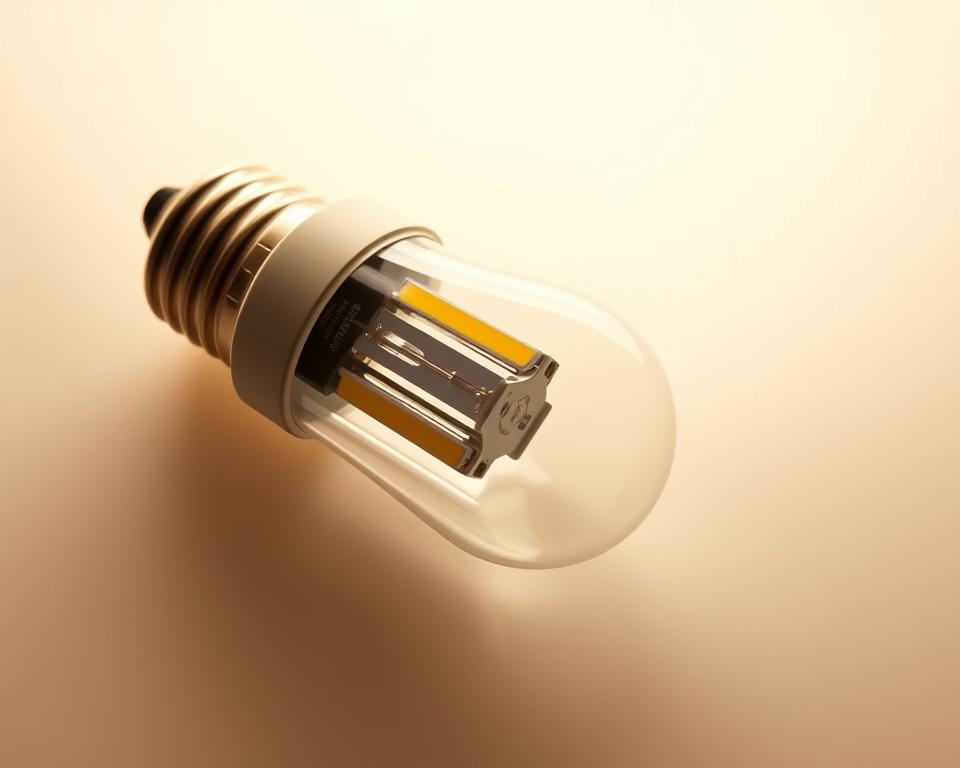Examining Advancements in Metal 3D Printing Tech
The global sector for 3D printed metal is projected to rise to $7.9 billion by 2028. This exponential increase is fueled by substantial advancements in alloy 3D printing technology. These breakthroughs are transforming how we produce complicated parts and frameworks. Industries such as space and medical field are at the leading edge, leveraging 3D printing metal to create detailed, tailored components with unmatched precision.
This piece explores the advanced methods propelling this transformation. It highlights how 3D printable metal is fundamentally altering fabrication methods. By investigating these innovations, we understand into the trajectory of manufacturing and the immense potential of this technology.
Comprehending Metal 3D Printing
Metal 3D printing is transforming the manufacturing industry by enabling the production of complicated alloy pieces with unparalleled accuracy and versatility. This technology allows for the layer-by-layer construction of intricate pieces, providing substantial gains over conventional methods.
What is Metal 3D Printing?
Alloy 3D printing, or metal 3D printing, employs diverse methods to produce alloy pieces. A 3D printing device metal printing device works by depositing matter incrementally, directly from digital models. This method facilitates the creation of complex forms and tailored layouts.
The Development of Alloy 3D Printing
The evolution of metal 3D printing commenced in the late 1900s with initial models of simple layouts. Over time, developments have increased its capabilities, shifting from simple designs to high-performance components. Nowadays, alloy 3D printing is utilized in aviation, car, and medical fields, because of ongoing innovation.
Key Gains of Alloy 3D Printing
Using a alloy 3D printing machine provides numerous benefits over conventional manufacturing methods. These involve:
- Creativity: The capacity to create intricate forms and intricate shapes that traditional techniques cannot attain.
- Lowered Material Loss: Alloy 3D printing employs material effectively, minimizing scrap during the manufacturing process.
- Customization: Effortlessly create tailored components, facilitating quick model development and customized outcomes across diverse fields.
- Velocity: Quicker production durations from idea to end product, optimizing the production process.
These gains make alloy 3D printing a appealing option for businesses looking to innovate and enhance their production potentials.
The Development of Metal 3D Printing Methods
The development of alloy 3D printing has been truly remarkable, moving from rudimentary starts to the advanced techniques we now witness. This path has centered around optimizing the complexity of *metal 3D printed parts*, optimizing the utilization of *3D printing alloy powder*, and expanding the availability of *metal 3D printing service* businesses.
Early Advancements
At its inception, alloy 3D printing was characterized by prototype techniques and a narrow range of substances. The earliest notable advancements were SLM and electron beam melting. These techniques initiated more reliable production of alloy parts. Pioneering adopters utilized these technologies to produce intricate forms that conventional fabrication processes couldn’t accommodate.
Modern Technological Trends
Currently, the advancements in alloy 3D printing are revolutionizing manufacturing. The concentration is on speeding up print processes, enhancing material traits, and lowering expenditures. The development of advanced *3D printing alloy powder* has allowed to manufacture robust and accurate *metal 3D printed parts*. Furthermore, the increase of *metal 3D printing service* businesses has made sophisticated manufacturing attainable to firms of all types.
Powder Bed Fusion Methods in Metal 3D Printing
PBF techniques have transformed alloy 3D printing, providing superior precision and exceptional material density. This method uses a electron beam to fuse fine alloy powders, including the advanced metal-based powder fusion technique. It excels in creating intricate geometries that traditional production techniques cannot achieve.
Two main Powder Bed Fusion techniques are prominent: Selective Laser Melting and DMLS. Each offers distinct gains and is crucial in fields like aviation, automotive, and medical fabrication.
- Selective Laser Melting: Using a powerful light source, it completely fuses the metal powder, resulting in parts with outstanding mechanical properties.
- DMLS: This process uses a beam to precisely melt powder particles, suitable for creating pieces with complicated internal structures and excellent accuracy.
Direct metal laser sintering is preferred for intricate patterns and rapid prototyping, ensuring productivity without forgoing quality. Although Powder-Based Fusion methods have high costs and extended fabrication rates, their accuracy and material utilization are fueling their adoption across fields.
Here is a comprehensive examination:
| Element | Laser Sintering | DMLS |
|---|---|---|
| Laser Specification | Powerful laser | Fiber laser |
| Material Utilization | High | Average to Superior |
| Operational Versatility | Highly flexible | Exceptionally adaptable |
| Key Industries | Space, Car, Healthcare | Aviation, Vehicle, Healthcare |
| Typical Materials | Aluminium, Ti, Steel | Al, Titan, Stainless Steel |
Both metal powder bed fusion techniques are developing, promising increased efficiency and substance potential. As tech progresses, the capability of Powder-Based Fusion in metal 3D printing is expected to grow, driving innovation across various fields.
Implementations of SLM
SLM has changed the metal 3D printing industry, offering unequaled accuracy and versatility. It allows the creation of intricate structures with simplicity. This part examines how Laser Sintering is used across various industries, highlighting its significant impact.
SLM in Aerospace Sector
In aviation, Laser Sintering is essential for producing complex engine pieces such as rotor blades and fuel nozzles. It enables for substantial weight reduction while ensuring stability. This produces enhanced and reduced weight aerospace vehicles.
By boosting fuel economy and cutting pollution, Selective Laser Melting aligns with environmental objectives in the aviation sector.
Uses in Medicine of Selective Laser Melting
The healthcare sector greatly benefits from Selective Laser Melting, notably in producing personalized medical devices and replacement parts. Healthcare providers can now develop items personalized to specific individuals, providing a better compatibility and functionality. This produces better patient results.
Tailored prosthetics, such as those for skeletal and oral needs, are made to fit the specific body of each patient. This highlights the adaptability of metal 3D printing in boosting medical practices.
| Industry | Uses | Benefits |
|---|---|---|
| Space | Engine pieces, rotor blades, fuel nozzles | Weight reduction, enhanced fuel economy, enhanced operation |
| Medical | Tailored medical devices, artificial limbs | Custom healthcare solutions, improved compatibility and performance, reduced healing period |
Advantages of Electron Beam Fusion
Electron Beam Melting is a advanced process in alloy 3D printing. It utilizes a intense electron ray to bind alloy particles in a vacuum environment. This technique delivers several major advantages.
Decreasing Material Oxidation:
One significant benefit of Electron Beam Melting is its vacuum environment, which significantly minimizes oxidation. This is vital for materials like Titan and its combinations. These are essential in aviation and medical implants due to their susceptibility.
Improved Substance Traits:
Working in a vacuum environment not only maintains the substance clean but also enhances its mechanical properties. Electron Beam Melting-produced parts often display enhanced structural strength and fatigue resistance. These characteristics are crucial for uses under extreme conditions.
Complex Design Capabilities:
Electron Beam Melting is proficient in creating detailed designs and elaborate shapes. The precision of the beam of electrons enables intricate and customized parts. This is beyond what conventional production can achieve.
| Factor | Advantage |
|---|---|
| Oxidation Reduction | Reduced oxidation due to vacuum operation |
| Material Purity | Improved because of operation in vacuum |
| Physical Characteristics | Improved tensile strength and fatigue resistance |
| Design Versatility | Potential to manufacture intricate and customized pieces |
Electron Beam Melting’s employment of beams of electrons in a vacuum results in superior metal parts. These pieces have reduced oxidative degradation and improved mechanical properties. This renders Electron Beam Fusion crucial in fields requiring accuracy and durability, such as space and medical device fabrication.
Pioneering Laser-Based Sintering
Laser-Based Sintering has changed the metal 3D printing field. It utilizes a high-powered beam to sinter metal powder layer by layer, producing complex pieces without traditional patterns. This technique is notable for its exactness and effectiveness.
DMLS Material Requirements
For DMLS, materials must meet specific criteria for optimal functionality. Key substances comprise aluminium, titanium, alloy steel, and cobalt-chrome compounds. These alloys demand uniform particle size, excellent heat characteristics, and elevated melting temperatures to tolerate the intense light energy.
- Uniform Powder: The metallic particles must be uniformly sized and designed for accurate fusion.
- Temperature Traits: Substances must optimally conduct and transfer thermal energy to fuse and stabilize properly.
- Extreme Heat Resistance: Ensuring strength during the fusion process prevents defects.
Differences between DMLS and Conventional Manufacturing
When juxtaposing DMLS to traditional manufacturing, Direct Metal Laser Sintering offers obvious advantages. It can create complicated forms, cut down on material waste, and greatly shorten fabrication periods. For intricate layouts and prototypes, DMLS delivers unmatched flexibility and exactness.
| Factor | DMLS | Conventional Manufacturing |
|---|---|---|
| Complicated Forms | Outstanding | Restricted |
| Waste | Minimal | Substantial |
| Fabrication Period | Short | Long |
| Customization | Extremely Adaptable | Constrained |
By adopting Laser-Based Sintering, fields can unlock significant gains and enhancements in product innovation and fabrication. This technology is setting the stage for a novel age of progress.
Prospects of Direct Energy Deposition
Looking forward, Energy-Based Deposition is likely to change manufacturing. Its potential for high deposition rates and the ability to augment or restore pieces signifies a substantial transformation. This innovation is likely to deeply influence sectors like heavy industry and power.
Energy-Based Deposition facilitates the restoration of components that have worn out, thus extending the durability of vital devices. This is notably valuable in industries requiring large machinery, where replacement parts can be both slow and costly.
The adaptability of DED in processing various materials renders it a prime option for bespoke manufacturing solutions. It offers accuracy and effectiveness to the procedure, creating new avenues in product creation and development.
Here’s a detailed examination of the gains Energy-Based Deposition provides in different industries:
| Field | Gains from Energy-Based Deposition |
|---|---|
| Industrial Production | Rapid material placement, restoration and repair abilities |
| Power | Upkeep, lengthened part life, and expense savings |
| Aerospace | Tailored production, reduced-weight parts, accuracy |
| Medical | Superior exactness, biocompatible materials, rapid prototyping |
In conclusion, the advancement in DED indicates a bright future. It promises to enhance production effectiveness and improve material optimization, placing DED at the forefront of manufacturing innovation.
Metal 3D Printing Breakthroughs in Automotive Sector
Alloy 3D printing is revolutionizing the car sector, offering innovative innovations to auto engineering and manufacturing methods. This technology enables the manufacturing of tailored pieces, transforming classical production methods.
Effects on Car Design
Vehicle engineers now utilize metal 3D printing to create complex and lightweight structures. This versatility allows for the production of distinct parts that improve vehicle functionality and aesthetics. Notably, intricate shapes that were once impractical or high-priced are now attainable.
Manufacturing Efficiency Improvements
3D printing tech substantially enhances production efficiency in the car sector. It reduces the requirement for several fabrication phases, streamlining production lines and reducing material loss and manufacturing periods. Moreover, quick model development is made possible, permitting faster versions and quicker release for new models.
The gains of 3D printing in vehicle parts are clear: improved precision and lowered substance utilization. These advantages lead to notable financial gains and operational efficiency across the industry.
Jetting Process: A Pivotal Leap in Alloy Fabrication
Jetting Process marks a significant advancement ahead metal 3D printing, providing multiple gains for industrial applications. This method, which places a 3D printing metal binder incrementally, significantly lowers manufacturing duration over traditional methods. Its economic efficiency is notable, appealing to producers aiming to reduce expenditures without forgoing precision.
Yet, it’s essential to recognize some constraints. Initial parts may show decreased compactness and durability. To reduce this, secondary techniques like fusion can be used. These actions boost material characteristics, equating them with those achievable through other metal 3D fabrication methods.
Even with these compromises, Binding Technology’s benefits, particularly in terms of velocity and expense, are substantial. By incorporating a 3D manufacturing metal binding agent into their methods, companies can unlock considerable gains. This places them at the cutting edge of production progress.
Scaling Up with Big Metal Additive Manufacturing Machines
Emerging large format metal 3D printing machines are revolutionizing the production of complex, massive parts across industries. These printers deliver significant promise but also introduce specific challenges. Addressing these challenges is vital to completely leverage their abilities.
Hurdles in Big Printing
One significant challenge with big alloy 3D printers is ensuring accuracy over large volumes. As fabricated pieces grow in size, maintaining stable accuracy and strength becomes more complex. Prolonged print times for large structures also bring factors that challenge the manufacturing process.
- Precision and Accuracy: Maintaining exactness over bigger areas is complicated, often requiring sophisticated calibration and monitoring techniques.
- Print Speed: Larger items need more duration to fabricate, which raises the chance of defects and the need for improved quality control measures.
- Substance Management: Handling the big amounts of metal powder or printing substance demanded for these fabricated pieces presents organizational obstacles in material warehousing and management.
Sectors Gaining from Large-Scale Printing
Various fields will significantly profit from big metal 3D printing machines, particularly those requiring big, intricate parts. The ability to 3D produce big components on-demand delivers notable logistical and financial gains.
| Sector | Advantages | Applications |
|---|---|---|
| Architecture | Shorter production durations, Tailoring | Architectural elements, Structural frameworks |
| Marine Construction | In-situ production, Financial effectiveness | Ship bodies, Engine components |
| Energy | Robust piece manufacturing, Reduced downtime | Pipeline connections, Exploration tools |
These examples highlight the extensive capabilities applications of large-scale alloy 3D printing devices across multiple industries. As technology develops, it will be exciting to witness how 3D printing big components will more change these sectors.
Material Innovations in Alloy 3D Additive Manufacturing
The metal 3D printing sector is progressing quickly, driven by advancements in materials. New material granules and mixtures are driving this development, substantially enhancing the tech’s abilities and uses. Global firms are investing capital into innovation to reveal innovative materials for diverse commercial applications.
A notable jump in 3D additive manufacturing alloys development is the emergence of custom alloys. These materials possess augmented strength, thermal stability, and resistance to corrosion. Such breakthroughs are crucial for industries like aerospace, automotive, and healthcare, where durability and efficiency are paramount. Furthermore, customizing these substances for particular demands offers unequaled versatility and effectiveness in manufacturing.
To highlight the breadth and benefits of material innovations in metal 3D printing, consider the table below, which outlines notable developments and their implementations:
| Advancement in Materials | Notable Traits | Production Needs |
|---|---|---|
| Titanium-Based Compounds | Reduced weight, enhanced robustness, corrosion resistance | Space, medical equipment |
| Nickel-based Superalloys | High-temperature resistance, strength | Electricity creation, vehicle, aerospace |
| Al Alloys | Reduced weight, oxidation resistance | Automotive, aerospace |
| Steel Mixtures | Robustness, hardness, anti-corrosion properties | Medical devices, food production, vehicle |
These cases highlight the major effects of advancements in materials on 3D fabrication materials development. As these developments evolve, they are set to transform conventional fabrication, enabling intricate shapes and personalized material properties.
Custom Metal Parts: Changing Fabrication
The ability to manufacture personalized metal pieces through 3D printing is changing production. This innovation offers unparalleled 3D fabrication tailoring abilities. It allows sectors to produce complicated layouts and personalized components readily.
Personalization Abilities
3D additive manufacturing personalization delivers a significant advantage by facilitating components customized to particular needs. Unlike classical processes, 3D fabrication facilitates rapid prototyping and modifications. This versatility is essential for industries demanding accuracy and individuality in their pieces.
- Design Freedom: 3D printing enables complex forms and complex patterns that are challenging to attain with classical techniques.
- Swift Prototype Creation: Allows swift movement from concept to model, producing speedier versions and a shorter time-to-market.
- Cost-Effective Production: Lowers material loss and resource expenditures by creating only what is needed.
Industries Utilizing Custom Metal Parts
Multiple sectors are leveraging personalized metal pieces through 3D additive manufacturing personalization to boost their items and methods:
- Medicine: Personalized alloy components are used to create individualized implants and prosthetics, improving compatibility and performance.
- Automotive: Manufacturers employ 3D fabrication to develop less heavy, durable parts that boost auto performance and fuel economy.
- Consumer Products: Businesses can produce unique products customized to particular tastes, delivering a distinct value proposition to customers.
The adoption of personalized alloy components and 3D additive manufacturing personalization is propelling several fields into a novel era of production innovation and efficiency.
Monetary Influences of Alloy 3D Fabrication Service Offerings
Alloy 3D printing solutions are changing manufacturing with their flexibility and cost-efficiency. They substantially lower decrease funds and manufacturing periods, associated with traditional fabrication. This facilitates the quick and cost-effective production of complicated alloy components, accelerating production times.
One key benefit of metal 3D additive manufacturing is its waste reduction. Conventional processes often lead to notable waste. In comparison, 3D printing places material layer by layer, cutting down on waste. This not only cuts manufacturing expenses but also has a favorable environmental impact.
Cost savings are another gain, thanks to the capacity to manufacture parts on demand. This technique removes the demand for big warehouses, releasing funds for other ventures. It’s notably advantageous for sectors needing personalized or low-volume parts, like aerospace and medical sectors.
The monetary effect of alloy 3D fabrication also encompasses workforce expansion. As requirement for these offerings expands, so does the requirement for qualified employees. These jobs include running 3D printing machines, processing final touches, and inspection. This expansion boosts the job market and aids in monetary progress.
These gains are evident when contrasting classical manufacturing to alloy 3D additive manufacturing:
| Aspect | Conventional Fabrication | Metal Fabrication |
|---|---|---|
| Initial Funding | Significant | Minimal |
| Production Duration | Extended | Quick |
| Material Waste | High | Reduced |
| Personalization | Restricted | High |
The monetary effect of alloy 3D printing is also evident in its competitive advantage. Companies employing these offerings can swiftly introduce goods to market, reacting swiftly to market needs and developments. This agility is essential in today’s quick-moving business world.
The rise of alloy 3D printing solutions is changing economic models, allowing more effective, economic, and progressive production methods. As this technology advances, its economic impact will likely expand, additionally changing manufacturing techniques and market dynamics.
Eco-Friendly Approaches in Metal Fabrication
The transition towards green methods is essential in the modern quick-moving manufacturing sector. Metal fabrication leads this transformation, offering approaches that greatly cut down on material loss and fuel usage. It allows a more productive material management, from creation to final product phase.
One major advantage of alloy 3D printing is its material efficiency. Conventional techniques often produce significant material loss, removing excess material to shape the end result. Sustainable 3D printing, however, creates components sequentially, applying only what’s required. This method preserves materials and turns the production process more eco-friendly, with reduced ecological footprint.
Energy efficiency is essential for producers seeking to go green. Metal additive manufacturing methods tend to be more energy-efficient than classical processes. The precision of sustainable 3D printing cuts down on the demand for numerous manufacturing stages, thus decreasing energy use. Additionally, in-situ manufacturing with metal 3D printers can lower the environmental impact from transportation and transport, enhancing environmental sustainability.
To sum up, metal additive manufacturing is paving the way for a eco-friendly manufacturing era. By adopting green additive manufacturing, sectors can advance while saving the planet. As this technology develops, it guarantees even more productivity and a reduced ecological impact. This highlights the necessity for these practices in modern manufacturing.



